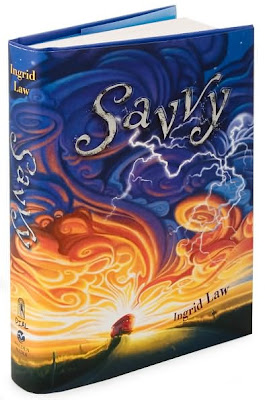
by Paul Auster
adapted and illustrated by
Julia Goschke
Penguin 2008
Wow. It isn't often you come across a miscalculation this severe.
First, I love Paul Auster's writing. I'm surprised to encounter people who don't know anything he's done. He writes for adults, so it isn't like I'm talking about some obscure children's author when I mention him to people.
But Auster didn't write this book. This is a picture book adaptation of his novel of the same name that tells Timbuktu's story from his own unique point of view. That is to say, Timbuktu is a dog, and his story is a meditation on what it means to be a modern dog in the city.
Here's the question I have: who thought this would make a good picture book for children. This came out under Penguin's Young Reader's Group imprint, so clearly they view this as a picture book. But what is the audience for a dog's existential meditation on life and, ultimately, death. Not just any death, the death of a dog longing to reunite with his old master, a homeless man. A dog death by playing a game with traffic. Unless I missed something, this is dog death by suicide.
I'll grant, there is a fairly strong history of books for children dealing with dogs that die, so much so that it's become a sort of joke. But a picture book? And I know there are books for younger readers aimed at helping them cope with the loss of a pet or other loved one. But a picture book where the dog chooses to play in traffic? Under other circumstances I also might have questioned the idea of a picture book that featured a dog getting neutered, but here that seems like a minor detail.
Okay, let's drop the ending for a moment and look at this as a story. We open with Timbuktu, called Mr. Bones here, observing that the homeless man who is his owner isn't long for the world. With a look his owner sends him packing, knowing he'll do better on his own, on the streets, than in the clutches of the authorities. So the story starts with a hint of death on the streets, just as it ends.
Next Mr. Timbuktu Bones goes in search of a new owner. I think. See, the text isn't really clear in that sense. It doesn't really have the kind of a story you follow so much as you kinda guess at it. This aimlessness works a whole lot better in novels than it does in picture books, let me tell you. So after a dashed hope with a few owners he somehow finds himself a new home with a family and some sort of provisional arrangement. I don't know, this is equally unclear. Next, the aforementioned neutering and some sort of rural retreat that may be a home for rescued dogs, a kennel for the terminally ill, or some sort of dog heaven. See, it's just not easy to grasp, and I'm a reasonably intelligent adult. Imagine trying to do all this with a lap sitter or a new reader.
Take that back, you can't do this with a new reader because the vocabulary is beyond them. Even as a read-aloud you'd have to spend fifteen minutes per page explaining the text, and then the images, and then the stream of questions that would result. But why is he now with that man on the subway? What is the doctor doing to him and why is he licking his private parts? Isn't it wrong for a dog to play around cars like that?
I think there's a place on a special shelf for this. It's wedged between the picture book adaptation of Sarte's No Exit and Beckett's picture book adaptation (96 pages!) of Waiting for Godot. Well out of reach of children.

























